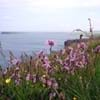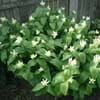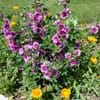Life Span
Perennial
Perennial
Type
Perennial
Flowering Plants, Fruits, Trees
Origin
Europe, Eastern Europe, Northern Europe, Southern Europe, Western Europe, Russia, Siberia
Central Asia
Types
not available
Aceymac apple, Bailey Sweet apple, Dabinett apple, Nehou apple
Number of Varieties
Not Available
Habitat
damp meadows, ditches, Fields, Hay fields, shores, springs, Swamps
Hillside
USDA Hardiness Zone
3-7
5-8
Sunset Zone
1a, 1b, 2a, 2b, 3a, 3b, 4, 5, 6, 7, 14, 15, 16, 17
A1, A2, A3, 8, 9, 10, 11, 12, 13, 14, 15, 16, 17, 18, 19, 20, 21, 22, 23, 24
Habit
Rosette/Stemless
Oval or Rounded
Flower Color
White, Pink, Light Pink, Rose
White
Flower Color Modifier
Bicolor
Not Available
Fruit Color
Purple, Bronze, Brown
Green, Red
Leaf Color in Spring
Green
Dark Green
Leaf Color in Summer
Dark Green
Green
Leaf Color in Fall
Dark Green
Brown, Green, Light Yellow
Leaf Color in Winter
Light Green
Not Available
Leaf Shape
Long linear and narrow
Oblong
Plant Season
Spring, Summer
Spring
Sunlight
Full Sun, Partial Sun
Full Sun, Partial shade
Type of Soil
Clay, Loam, Sand
Loamy
The pH of Soil
Acidic, Neutral, Alkaline
Neutral
Soil Drainage
Average
Well drained
Bloom Time
Late Spring, Early Summer
Fall, Summer
Tolerances
Drought
Drought
Where to Plant?
Container, Ground, Pot
Ground
How to Plant?
Divison, Seedlings
Grafting, Seedlings, Transplanting
Plant Maintenance
Low
Medium
Watering Requirements
Water daily during growing season
Medium
In Summer
Lots of watering
Lots of watering
In Spring
Moderate
Moderate
In Winter
Average Water
Average Water
Soil pH
Acidic, Neutral, Alkaline
Neutral
Soil Type
Clay, Loam, Sand
Loamy
Soil Drainage Capacity
Average
Well drained
Sun Exposure
Full Sun, Partial Sun
Full Sun, Partial shade
Pruning
Remove deadheads
Prune when plant is dormant, Remove dead or diseased plant parts
Fertilizers
All-Purpose Liquid Fertilizer, Fertilize in early spring, Fertilize the soil before planting, organic fertlizers, slow-release fertilizers
All-Purpose Liquid Fertilizer
Pests and Diseases
Healthy tree
Aphids, Canker, Caterpillars, Powdery mildew, Root rot
Plant Tolerance
Drought
Drought
Flower Petal Number
Single
Single
Foliage Texture
Medium
Medium
Foliage Sheen
Glossy
Matte
Attracts
Bees, Bumblebees, Butterflies, Hoverflies, Insects
Birds
Allergy
allergic reaction
Mouth itching, Throat itching
Aesthetic Uses
Showy Purposes
Not Available
Beauty Benefits
Skin irritation, Skin Problems
Not Available
Environmental Uses
Air purification
Air purification
Medicinal Uses
Not Available
Cancer, constipation, Diabetes, Diarrhea, Dysentry, Fever, Heart problems, Tooth ache
Part of Plant Used
Whole plant
Fruits
Other Uses
Oil is used in perfume, soaps, creams, etc., Used as Ornamental plant
Used As Food, Wood is used for making furniture
Used As Indoor Plant
No
No
Used As Outdoor Plant
Yes
Yes
Garden Design
Bog Garden, Wildflower
Fruit / Fruit Tree, Shade Trees, Showy Tree
Botanical Name
LYCHNIS flos-cuculi
Malus domestica
Common Name
Ragged Robin
Apple Tree
In Hindi
Ragged Robin
सेब का वृक्ष
In German
Kuckucks-Lichtnelke
Apfelbaum
In French
Ragged Robin
Pommier
In Spanish
petirrojo desigual
Manzano
In Greek
ragged Robin
μηλιά
In Portuguese
Ragged Robin
Macieira
In Polish
Ragged Robin
jabłoń
In Latin
Robin ragged
Arbore
Phylum
Anthophyta
Magnoliophyta
Class
Equisetopsida
Magnoliopsida
Order
Caryophyllales
Rosales
Family
Caryophyllaceae
Rosaceae
Clade
Angiosperms, Core eudicots, Eudicots
Angiosperms, Eudicots, Rosids
Tribe
Not Available
Not Available
Subfamily
Not Available
Not Available
Number of Species
Not Available
Not Available
Season and Care of Ragged Robin and Apple Tree
Season and care of Ragged Robin and Apple Tree is important to know. While considering everything about Ragged Robin and Apple Tree Care, growing season is an essential factor. Ragged Robin season is Spring and Summer and Apple Tree season is Spring and Summer. The type of soil for Ragged Robin is Clay, Loam, Sand and for Apple Tree is Loamy while the PH of soil for Ragged Robin is Acidic, Neutral, Alkaline and for Apple Tree is Neutral.
Ragged Robin and Apple Tree Physical Information
Ragged Robin and Apple Tree physical information is very important for comparison. Ragged Robin height is 61.00 cm and width 60.00 cm whereas Apple Tree height is 25.00 cm and width 20.00 cm. The color specification of Ragged Robin and Apple Tree are as follows:
Ragged Robin flower color: White, Pink, Light Pink and Rose
Ragged Robin leaf color: Green
Apple Tree flower color: White
- Apple Tree leaf color: Dark Green
Care of Ragged Robin and Apple Tree
Care of Ragged Robin and Apple Tree include pruning, fertilizers, watering etc. Ragged Robin pruning is done Remove deadheads and Apple Tree pruning is done Prune when plant is dormant and Remove dead or diseased plant parts. In summer Ragged Robin needs Lots of watering and in winter, it needs Average Water. Whereas, in summer Apple Tree needs Lots of watering and in winter, it needs Average Water.





